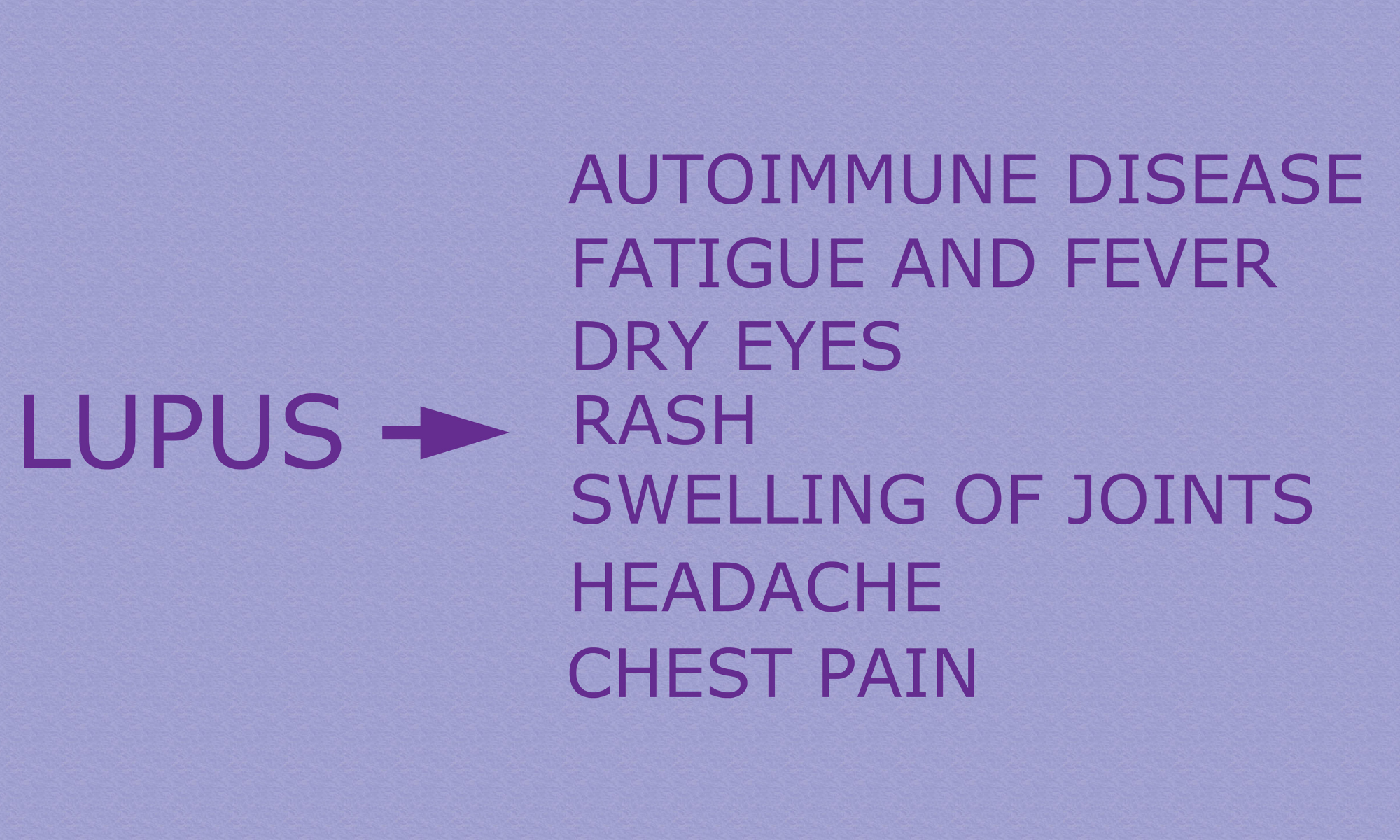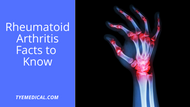Rheumatoid Arthritis Facts to Know
Written by TYE Medical on Jan 7th 2022
If you have rheumatoid arthritis (RA), you experience joint pain and discomfort because your immune system mistakenly attacks your joints. It’s one of many autoimmune conditions. The pain, redness, and inflammation in various joints can interfere with your daily life. But it’s essential to seek treatment for the condition even if symptoms seem mild because treatment also prevents further damage.
Even though RA is complex, proactive management can improve your quality of life. Here are 13 facts to help you live well with rheumatoid arthritis.
1. It’s an invisible disease in its early stages.
In the beginning, you won’t look any different but will begin to notice symptoms like stiffness, fatigue, and pain. Since you look as you always have, your limitations and challenges won’t be evident to outsiders. If you don’t share your specific symptoms with loved ones, they will struggle to understand.
Underlying inflammation causes rheumatoid arthritis, which means your physical and emotional health can be affected. The pain and fatigue can mentally wear you down as the illness progresses. If your friends and family understand what you’re going through, they can better support you.
2. You can have RA and Lupus at the same time.

Another rheumatoid arthritis fact to know is that it can exist alongside other autoimmune disorders such as lupus. This is often referred to as “overlap syndrome.” While both conditions cause joint symptoms, lupus can also cause kidney problems, skin rashes, and decreased blood cells. But since inflammation causes both disorders, they often have similar treatments.
Even so, you might find that RA symptoms improve while lupus symptoms flare. It’s important to see your doctor regularly for exams and bloodwork to be sure treatments are effective.
3. RA symptoms can change with age.
Rheumatoid arthritis can strike either gender at any age but is most common in women ages 25-45. While pain and inflammation are the primary symptoms, the condition may affect your daily life more profoundly as you get older. This is especially true if you were diagnosed at a younger age, like your 20s or 30s.
Progressed symptoms include:
- Increased fatigue that requires more time for daily tasks
- Increased need for sleep
- More difficulty with memory
- Weight loss
- Need to rest after activity
Fatigue is a common RA symptom that becomes more noticeable with age and the illness’s progression.
4. You can have rheumatoid arthritis and fibromyalgia.

More than 20-30% of people have both conditions because having RA can increase your risk of fibromyalgia. Although both cause fatigue and pain, fibromyalgia often produces constant pain rather than intermittent pain (as with RA). And unlike RA, fibromyalgia doesn’t necessarily worsen with time.
Additional fibromyalgia symptoms include:
- Irritable bowel syndrome
- Headaches
- Fatigue
- Anxiety or depression
- Sleep deprivation
- Sensitivity to temperature, sound, and light changes
Fibromyalgia can’t be cured, but you can manage symptoms by getting enough deep sleep, reducing stress, and practicing relaxation techniques.
5. You can manage pain with exercise.
Even though exercising is the last thing on your mind when experiencing RA pain, it’s a critical tool for pain management. This is an important rheumatoid arthritis fact that many people overlook. If you’re not accustomed to routine exercise, start slowly and ease into a low-impact program that’s joint-friendly. Gradually increase your exercise time and intensity as is tolerable for you.
Yoga and tai chi can help increase mobility and even alleviate RA pain.
6. Rest is crucial during RA flare-ups.

While exercising is important for pain management, rest should be your priority during an RA flare. When it comes to exercise, find the intensity and frequency that’s best for you without overdoing it. It may take some time to determine the right threshold. If you overdo it on exercise, it could trigger a flare-up.
Over-exercising can increase inflammation in your body, which is why it flares your RA. But if you incorporate regular, quality rest as part of your exercise program, you’ll reap more benefits and decrease the frequency of flare-ups.
Always be sure to listen to your body and adjust as needed. If you’re feeling more pain, stiffness, or are run down, consider taking a day off from your exercise routine or do gentle yoga stretches instead.
7. Minimize stress, minimize flare-ups.
Like over-exercising, stress also creates inflammation and triggers RA flares. It even worsens fibromyalgia symptoms. A lesser-known rheumatoid arthritis fact is that relaxation can help prevent flare-ups and the most intense symptoms.
Try some relaxation techniques like meditation, listening to relaxing music, or taking a short walk. When you incorporate these into your day, it can offset stress and increase the time between flare-ups.
8. You can manage RA fatigue and brain fog.
Fatigue is a common rheumatoid arthritis symptom, but when you notice increased tiredness, it can be a sign of a pending flare-up. But RA fatigue doesn’t necessarily make you drowsy. Instead of experiencing sleepiness, you feel weak and exhausted.
If fatigue continues or becomes excessive, it can even affect your memory and cause “brain fog.” This means you have difficulty concentrating or recalling information because prolonged physical fatigue can also exhaust your mental energy.
Some rheumatoid arthritis treatments can improve brain fog, but it’s generally a symptom that lingers long term. You can manage fatigue and brain fog by keeping a regular sleep schedule, eating a healthy diet, and getting adequate daily exercise.
9. You may need help from a mental health professional.
Some stress, anxiety, or depression is common with RA. But it should be occasional and not a long-term symptom. If you find you’re struggling with these mental health symptoms, it is probably time to seek the support of a professional.
You’ll know it’s time if you’re experiencing regular anger, sadness, fear, or feelings of hopelessness. You might also notice that you’ve lost interest in activities you normally enjoy or don’t feel like yourself. Your primary care doctor or rheumatologist can refer you to a mental health professional who has experience with RA patients.
10. Weight management can slow progression and alleviate symptoms.

One of the most helpful rheumatoid arthritis facts is that weight loss can notably improve your health. Obesity speeds progression and can prevent remission. When you lose weight, RA pain in your hips, back, and knees noticeably decreases. You may also feel less fatigued.
But it’s best not to rush into a crash diet or take extreme measures. Your doctor can advise you about an effective and gradual weight loss plan to improve your overall health and decrease symptoms.
11. Rheumatoid arthritis can affect organs as well as joints.
Heart disease is the number one cause of death in RA patients. This is because the inflammation associated with RA can spread to your internal organs, specifically the heart and lungs. Your doctor must monitor these organs regularly as part of managing your condition.
To lower your risk of RA-related heart disease, you can do the following:
- Reduce your cholesterol levels
- Stabilize your blood pressure
- Eat a low-fat diet
- Include cardio workouts in your exercise routine
- Quit smoking
12. Support groups can be helpful.

Your friends and family may not understand your symptoms or how they affect your daily life. Sometimes, fatigue and pain can be challenging to convey to others. After all, many people live busy lives and are tired. So, the degree of exhaustion and pain you battle may receive little consideration or sympathy.
Talking about your experiences and the impact on your life with other RA patients can relieve some emotional stress and frustration. You might find that an RA support group offers the emotional outlet you need to face ongoing challenges. Reaching out can help you feel less isolated.
You can find RA support groups online and in person.
13. RA can go into remission.
If you catch rheumatoid arthritis early and receive appropriate treatment, the disease can go into remission. Typically, this occurs within the first few months of a treatment plan that aims to alleviate symptoms and slow progression.
When in remission, it can feel like your RA has disappeared. You have few to no symptoms and feel better even though the disease isn’t “cured.” Remission can last weeks, months, or years. And for some, their RA goes in and out of remission.
For most patients and their doctors, remission is the ultimate goal.
Urinary Incontinence Is a Common Side Effect of RA

Rheumatoid arthritis doesn’t directly affect the bladder, but it can cause functional incontinence or stress incontinence when movement is restricted.
As rheumatoid arthritis affects joints and causes pain, it can limit movement and your ability to reach the bathroom in time, unfasten clothing, or use a toilet without assistance. This is called functional incontinence and is more prevalent in patients with advanced RA.
Even if your symptoms haven’t progressed to this degree, you can develop stress incontinence from constipation. Often, people with RA avoid exercise because of their fatigue and pain symptoms. But this lack of movement also affects your digestive system, making it sluggish and leading to constipation. Without regular bowel movements, the pressure in your abdomen can affect your bladder and cause leaks, known as stress incontinence.
If you’re battling bladder leakage along with rheumatoid arthritis symptoms, try our premium products for light, moderate, or heavy incontinence . You will receive premium products with free and discreet shipping.


